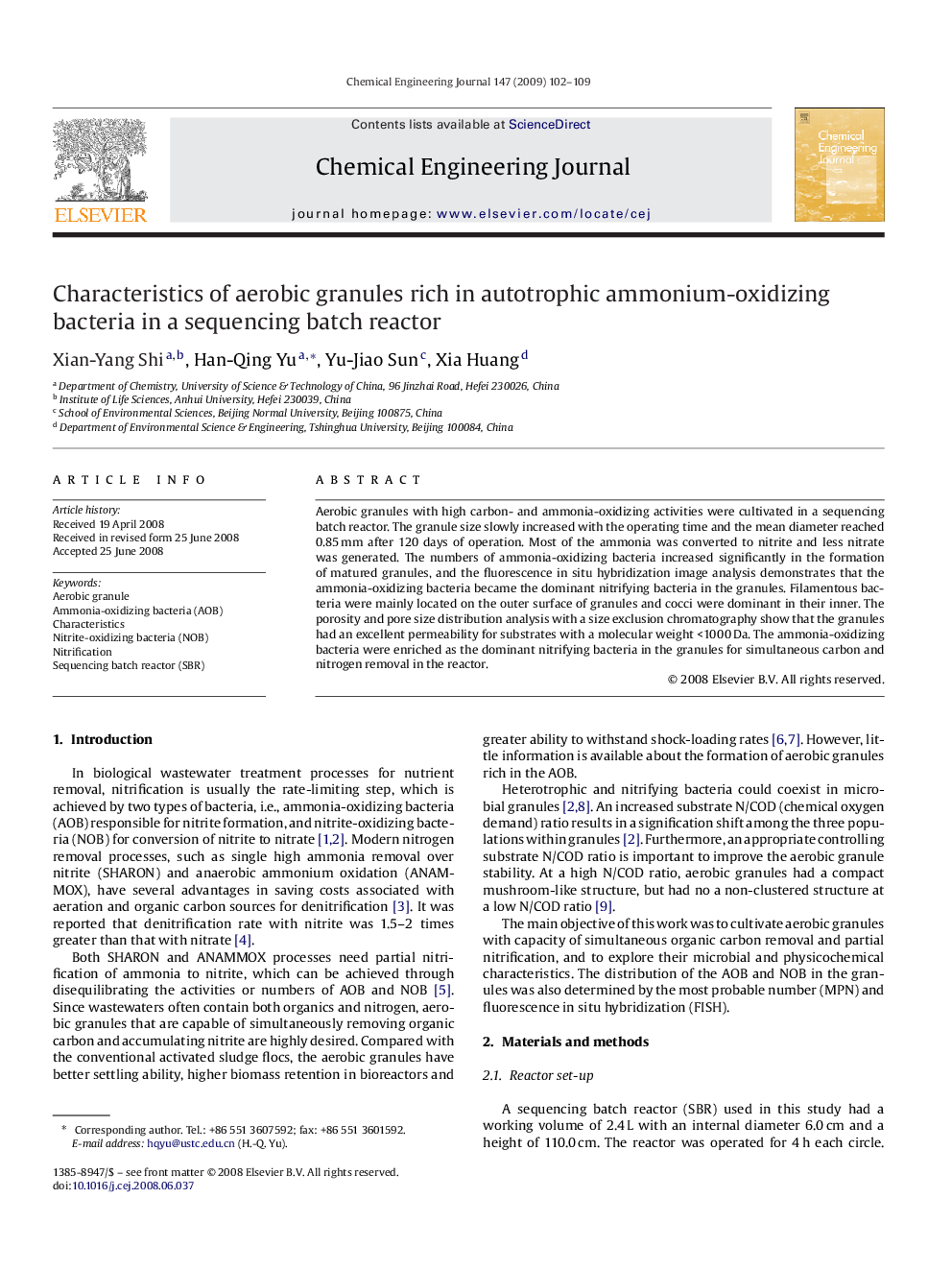| Article ID | Journal | Published Year | Pages | File Type |
|---|---|---|---|---|
| 152534 | Chemical Engineering Journal | 2009 | 8 Pages |
Aerobic granules with high carbon- and ammonia-oxidizing activities were cultivated in a sequencing batch reactor. The granule size slowly increased with the operating time and the mean diameter reached 0.85 mm after 120 days of operation. Most of the ammonia was converted to nitrite and less nitrate was generated. The numbers of ammonia-oxidizing bacteria increased significantly in the formation of matured granules, and the fluorescence in situ hybridization image analysis demonstrates that the ammonia-oxidizing bacteria became the dominant nitrifying bacteria in the granules. Filamentous bacteria were mainly located on the outer surface of granules and cocci were dominant in their inner. The porosity and pore size distribution analysis with a size exclusion chromatography show that the granules had an excellent permeability for substrates with a molecular weight <1000 Da. The ammonia-oxidizing bacteria were enriched as the dominant nitrifying bacteria in the granules for simultaneous carbon and nitrogen removal in the reactor.
